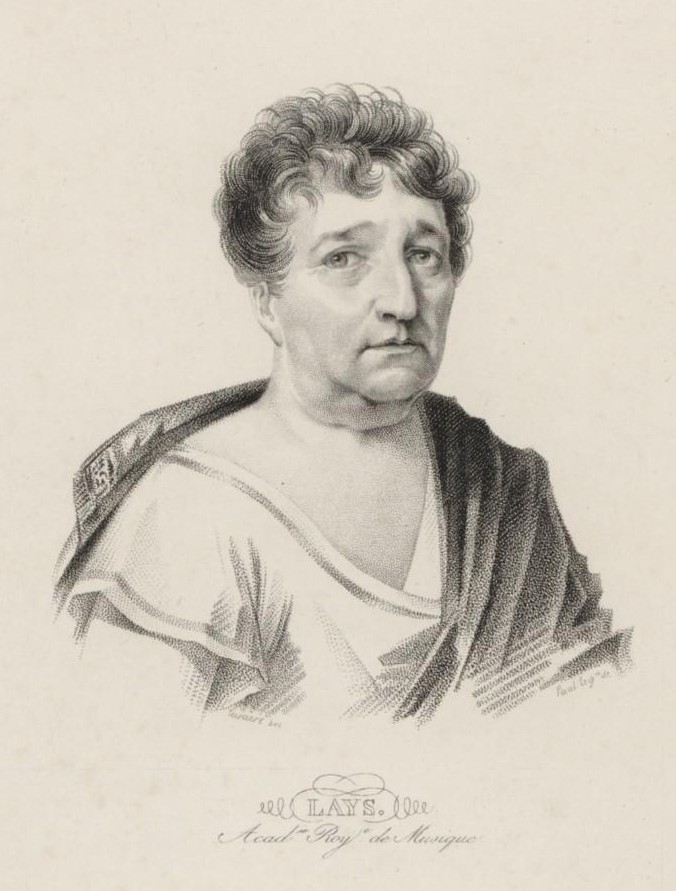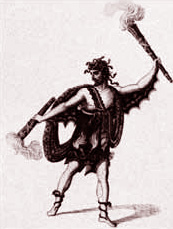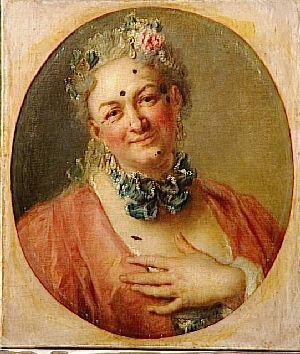|
Fernand Cortez
''Fernand Cortez, ou La conquête du Mexique '' (''Hernán Cortés, or The Conquest of Mexico'') is an opera in three acts by Gaspare Spontini with a French libretto by Étienne de Jouy and Joseph-Alphonse Esménard. It was first performed on 28 November 1809 by the Académie Impériale de Musique (Paris Opera) at the Salle Montansier. Background and performance history The opera was originally intended as political propaganda to support the Emperor Napoleon's invasion of Spain in 1808. Cortez symbolises Napoleon while the bloodthirsty Aztec priests are meant to represent the Spanish Inquisition. The emperor himself is said to have suggested the theme of the opera to Spontini and the premiere was held in his presence. The popularity of the piece declined with the waning of the French army's fortunes in Spain and Portugal. The 1809 premiere was famous for its spectacular effects, including the appearance of 17 live horses on stage. Critics complained about the adventurous harmony ... [...More Info...] [...Related Items...] OR: [Wikipedia] [Google] [Baidu] |
Gaspare Spontini
Gaspare Luigi Pacifico Spontini (14 November 177424 January 1851) was an Italian opera composer and conductor from the classical era. Biography Born in Maiolati, Papal State (now Maiolati Spontini, Province of Ancona), he spent most of his career in Paris and Berlin, but returned to his place of birth at the end of his life. During the first two decades of the 19th century, Spontini was an important figure in French ''opera''. In his more than twenty operas, Spontini strove to adapt Gluck's classical '' tragédie lyrique'' to the contemporary taste for melodrama, for grander spectacle (in ''Fernand Cortez'' for example), for enriched orchestral timbre, and for melodic invention allied to idiomatic expressiveness of words. As a youth, Spontini studied at the Conservatorio della Pietà de' Turchini, one of four active music conservatories of Naples. Working his way from Italian city to city, he got his first break in Rome, with his successful comedy ''Li Puntigli delle Donne ... [...More Info...] [...Related Items...] OR: [Wikipedia] [Google] [Baidu] |
Theater Erfurt
The Theater Erfurt is a German municipal theatre located in Erfurt, the capital of Thuringia. The main stage is in a building in the Brühlervorstadt, completed in 2003. The theatre offers musical theatre and concerts, played by the Philharmonisches Orchester Erfurt. Ballet and plays are offered by guest performances. The company organizes the annual open air festival '' DomStufen''. The theatre's current ''Generalintendant'', Guy Montavon, has held the post since 2002. Stages The main venue is in a new house, ''Großes Haus''. The large hall seats 840 visitors, a ''Studio'' 200 visitors, which can be reduces as ''Salon im Studio'' for events for up to 100 people. The courtyard holds the stage ''Theatrium''. Events can also be held in the rehearsal hall for the orchestra. The festival ''DomStufen'' takes place on the ''Domplatz'' (Cathedral Square) of Erfurt, seating up to 2000 spectators. The company also holds events at the ''Rathaus'' (Town Hall) and the ''Thomaskirche''. Prem ... [...More Info...] [...Related Items...] OR: [Wikipedia] [Google] [Baidu] |
Soprano
A soprano () is a type of classical female singing voice and has the highest vocal range of all voice types. The soprano's vocal range (using scientific pitch notation) is from approximately middle C (C4) = 261 Hz to "high A" (A5) = 880 Hz in choral music, or to "soprano C" (C6, two octaves above middle C) = 1046 Hz or higher in operatic music. In four-part chorale style harmony, the soprano takes the highest part, which often encompasses the melody. The soprano voice type is generally divided into the coloratura, soubrette, lyric, spinto, and dramatic soprano. Etymology The word "soprano" comes from the Italian word '' sopra'' (above, over, on top of),"Soprano" '' |
Louis Nourrit
Louis Nourrit (4 August 1780, Montpellier – 23 September 1831, Brunoy) was an early 19th-century French tenor. Throughout his operatic career, Nourrit also operated as a diamond merchant. Biography After he left Montpellier, he was admitted at the Conservatoire de Paris in 1802 where he received lessons from Pierre-Jean Garat. In 1805 he made his debut at the Paris Opéra as Renaud in Gluck's '' Armide''. After serving as the understudy to Étienne Lainez for a few years, he was promoted to the Opéra's leading tenor in 1812. He took part in the premieres of ''Les Abencérages'' by Luigi Cherubini (1813) and ''Olimpie'' by Gaspare Spontini (1819). Other roles included those of Orphée in ''Aladin ou La lampe merveilleuse'', an opéra féerie of 1822 by Nicolò), Harem in '' La caravane du Caire'' by Grétry, and Colin in ''Le devin du village''. In 1821 he saluted his son Adolphe's tenor debut in Gluck's '' Iphigénie en Tauride'', by appearing in the minor role of a Scy ... [...More Info...] [...Related Items...] OR: [Wikipedia] [Google] [Baidu] |
Henri-Étienne Dérivis
Henri-Étienne Dérivis (2 August 1780 – 1 February 1856) was a French operatic bass. For 25 years he was a leading singer at the Paris Opéra where he made his debut in 1803. He was born in Albi and died in Livry-Gargan at the age of 75. Life and career Dérivis was born in Albi, a town in southern France and entered the Paris Conservatory in December 1799. He made his debut at the Paris Opéra on 11 February 1803 as Sarastro in ''Les Mystères d'lsis'' (the French version of Mozart's ''The Magic Flute''). The same year he was also appointed a singer at Napoleon's court. During the course of his 25-year career at the Opéra, he performed all the leading bass roles and sang in many world premieres, including Spontini's ''La vestale'' and Rossini's ''Le siège de Corinthe''. His last appearance there was on 5 May 1828 as Œdipe in Sacchini's '' Œdipe à Colone'', a role he had sung to great success many times in his career. After retiring from the company, he continued to perfor ... [...More Info...] [...Related Items...] OR: [Wikipedia] [Google] [Baidu] |
Bass (voice Type)
A bass is a type of classical male singing voice and has the lowest vocal range of all voice types. According to ''The New Grove Dictionary of Opera'', a bass is typically classified as having a vocal range extending from around the second E below middle C to the E above middle C (i.e., E2–E4).; ''The Oxford Dictionary of Music'' gives E2–E4/F4 Its tessitura, or comfortable range, is normally defined by the outermost lines of the bass clef. Categories of bass voices vary according to national style and classification system. Italians favour subdividing basses into the ''basso cantante'' (singing bass), ''basso buffo'' ("funny" bass), or the dramatic ''basso profondo'' (low bass). The American system identifies the bass-baritone, comic bass, lyric bass, and dramatic bass. The German ''Fach'' system offers further distinctions: Spielbass (Bassbuffo), Schwerer Spielbass (Schwerer Bassbuffo), Charakterbass (Bassbariton), and Seriöser Bass. These classification systems ca ... [...More Info...] [...Related Items...] OR: [Wikipedia] [Google] [Baidu] |
François Lays
François Lay, better known under the stage name Lays (14 February 1758 – 30 March 1831), was a French baritone and tenor opera singer. Originally destined for a career in the church, Lays was recruited by the Paris Opéra in 1779. He soon became a leading member of the company, in spite of quarrels with the management. Lays enthusiastically welcomed the French Revolution and became involved in politics with the encouragement of his friend Bertrand Barère. Barère's downfall led to Lays being imprisoned briefly, but he soon won back the public and secured the patronage of Napoleon, at whose coronation and second wedding he sang. This association with the Emperor caused him trouble when the Bourbon monarchy was restored and Lays's final years were darkened by disputes over his pension, mounting debts, the death of his only son and his wife's illness. After a career spanning more than four decades, he died in poverty. Lays was famous for the beauty of his voice. One of the Op� ... [...More Info...] [...Related Items...] OR: [Wikipedia] [Google] [Baidu] |
Étienne Lainez
Étienne Lainez (or Lainé, Laînez) (23 May 1753 – 15 September 1822) was a French operatic tenor, and leading figure at the Paris Opera for over thirty years. In the course of his career there he created many tenor roles including Rodrigue in Sacchini's '' Chimène'', Énée in Piccinni's '' Didon'', Narcisse in Gluck's ''Echo et Narcisse'', and Licinius in Spontini's ''La vestale''. Lainez was born in Vaugirard in Paris, and died in Paris as well. After his retirement from the stage, he taught lyric declamation at the Paris Conservatoire The Conservatoire de Paris (), also known as the Paris Conservatory, is a college of music and dance founded in 1795. Officially known as the Conservatoire National Supérieur de Musique et de Danse de Paris (CNSMDP), it is situated in the avenue .... References French operatic tenors 1753 births 1822 deaths 18th-century French male opera singers 19th-century French male opera singers Singers from Paris {{France-opera-s ... [...More Info...] [...Related Items...] OR: [Wikipedia] [Google] [Baidu] |
Baritenor
Baritenor (also rendered in English language sources as bari-tenor or baritenore) is a portmanteau (blend) of the words "baritone" and "tenor." It is used to describe both baritone and tenor voices. In ''Webster's Third New International Dictionary'' it is defined as "a baritone singing voice with virtually a tenor range." However, the term was defined in several late 19th century and early 20th century music dictionaries, such as ''The American History and Encyclopedia of Music'', as "a low tenor voice, almost barytone sic.html"_;"title="'sic">'sic''" _In_opera Baritenor_(or_its_Italian_language.html" "title="sic">'sic''.html" ;"title="sic.html" ;"title="'sic">'sic''">sic.html" ;"title="'sic">'sic''" In opera Baritenor (or its Italian language">Italian form, ''baritenore'') is still used today to describe a type of tenor voice which came to particular prominence in Rossini's operas. It is characterized by a dark, weighty lower octave and a ringing upper one but with sufficien ... [...More Info...] [...Related Items...] OR: [Wikipedia] [Google] [Baidu] |
Hernán Cortés
Hernán Cortés de Monroy y Pizarro Altamirano, 1st Marquess of the Valley of Oaxaca (; ; 1485 – December 2, 1547) was a Spanish ''conquistador'' who led an expedition that caused the fall of the Aztec Empire and brought large portions of what is now mainland Mexico under the rule of the King of Castile in the early 16th century. Cortés was part of the generation of Spanish explorers and conquistadors who began the first phase of the Spanish colonization of the Americas. Born in Medellín, Spain, to a family of lesser nobility, Cortés chose to pursue adventure and riches in the New World. He went to Hispaniola and later to Cuba, where he received an ''encomienda'' (the right to the labor of certain subjects). For a short time, he served as ''alcalde'' (magistrate) of the second Spanish town founded on the island. In 1519, he was elected captain of the third expedition to the mainland, which he partly funded. His enmity with the Governor of Cuba, Diego Velázquez de Cuél ... [...More Info...] [...Related Items...] OR: [Wikipedia] [Google] [Baidu] |
Haute-contre
The haute-contre (plural hautes-contre) was the primary French operatic tenor voice, predominant in French Baroque and Classical opera, from the middle of the seventeenth century until the latter part of the eighteenth century. History This voice was predominantly used in male solo roles, typically heroic and amatory ones, but also in comic parts, even ''en travesti'' (see apropos the portrait reproduced below and representing Pierre Jélyotte made up for the female title role of Rameau's '' Platée''). Lully wrote 8 out of 14 leading male roles for the voice; Charpentier, who was an haute-contre himself, composed extensively for the voice-part, as did Rameau and, later, Gluck. The leading ''hautes-contre'' of the '' Académie Royale de Musique'' that created the main roles of Lully's operas, at the end of the seventeenth century, were Bernard Clédière (who started off as a ''taille'', a lower Tenor voice type) and Louis Gaulard Dumesny. Notable ''hautes-contre'' of the ei ... [...More Info...] [...Related Items...] OR: [Wikipedia] [Google] [Baidu] |
Clef
A clef (from French: 'key') is a musical symbol used to indicate which notes are represented by the lines and spaces on a musical stave. Placing a clef on a stave assigns a particular pitch to one of the five lines, which defines the pitches on the remaining lines and spaces. The three clef symbols used in modern music notation are the G-clef, F-clef, and C-clef. Placing these clefs on a line fixes a reference note to that line—an F-clef fixes the F below middle C, a C-clef fixes middle C, and a G-clef fixes the G above middle C. In modern music notation, the G-clef is most frequently seen as treble clef (placing G4 on the second line of the stave), and the F-clef as bass clef (placing F3 on the fourth line). The C-clef is mostly encountered as alto clef (placing middle C on the third line) or tenor clef (middle C on the fourth line). A clef may be placed on a space instead of a line, but this is rare. The use of different clefs makes it possible to write music for a ... [...More Info...] [...Related Items...] OR: [Wikipedia] [Google] [Baidu] |
.png)



